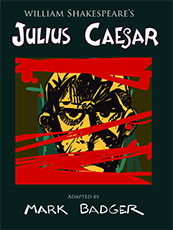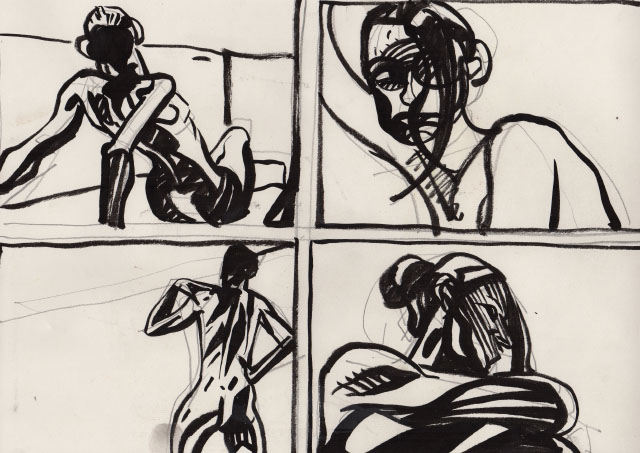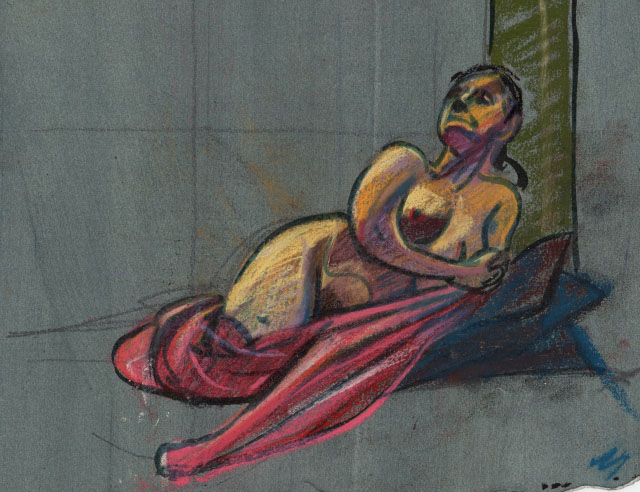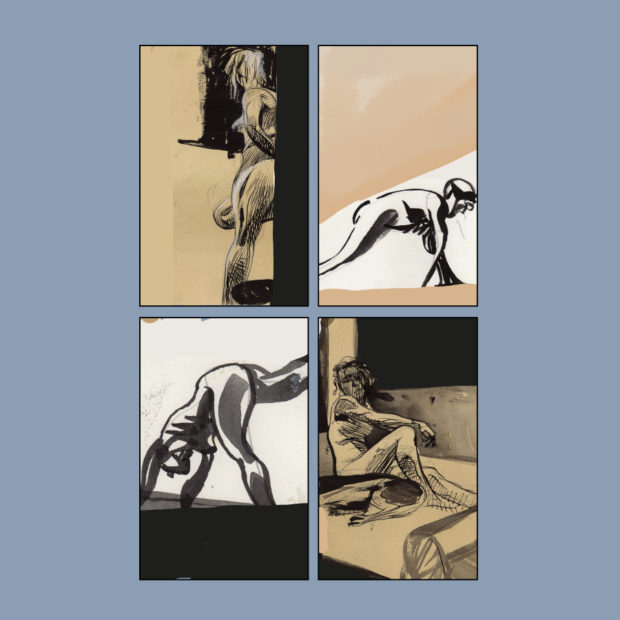
There are visual and verbal ideas, in comics, the visual is often dismissed because there is almost no grammar or language to discuss it. But comics are a combination of the visual and verbal. Verbal fabrications are the way we construct much of our consciousness, here’s one.
Put a green next to blue.
While you can write a thousand words to describe it is ultimately impossible to capture it in words because it works with a different part of the brain. To discuss comics with my self, I want a vocabulary that forces me to think about that different part of the brain.
I want a language for myself to make comics that are alive not the same old same old. When teaching Flash and HTML I learned about pattern languages, a vocabulary of solutions that programmers use as a generalized starting point for many of their problems. It gave me a way to explain what the heck a data file meant in relationship to their cute animation. It was a language of ideas and solutions that could give you a starting point for writing specific code.
Since comics are the most complex art form, developing a language to understand what that blue and green are doing next to each other is important to my growth.
“Pattern Language” are comics just narrative dressmaking?
The programmers swiped the idea of a pattern language from the architect Christopher Alexander whose 1977 book “A Pattern Language” first introduced it. Alexander looked at architecture and cataloged a set of solutions to problems, abstracting them out to principles that could be combined in various ways to solve building problems. As Wikipedia puts it “A pattern language is an organized and coherent set of patterns each of which describes a problem and the core of a solution that can be used in many ways within a specific field of expertise.”
Understanding the pattern language for code gave me a clear view of the principles behind many of the ideas such as “Model View Controller” that dictated how much of the web interacts and what designers of the web have to work with.
In Buddhism, you start with learning the pattern “The Four Noble Truths”. One, there’s stress. Two, clinging to things is what causes stress. Three, the way to end it is the 8-fold path. Four, is the eightfold path, another pattern in itself, it’s right view, right resolve right speech, right action right livelihood, right effort, right mindfulness, and right concentration. Buddhism A pattern language to take away the stress we live with.
A pattern language gives you a way to work with principles in complex situations and develop new solutions by how you combine them. Buddha solved the problem of doing the dishes, hopefully by creating my comics pattern language I can solve some of the problems of doing comics.
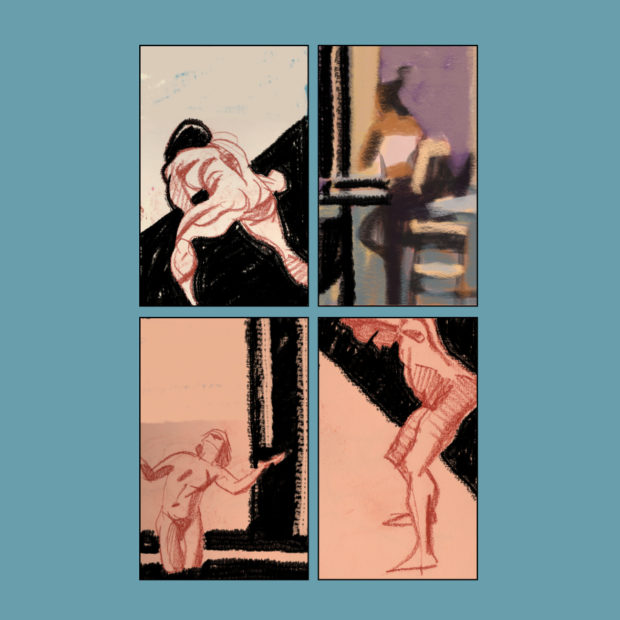
The secret to drawing like Barry Smith, Jim Lee, or Richard Diebenkorn and dating hot chicks.
A few years ago (26 actually), I had coffee with a cute babe from life drawing class. Both of us had read Sir Kenneth Clark’s Rembrandt and the Italian Renaissance. The book was a catalog of how Rembrandt had studied and mastered ideas from the Italian Renaissance and we went on about poses, light, and dark and composition for a few hours. Eventually, I got to see her library from Jackson Pollack’s drawings, Tin Tin and a “A History of the Comic Strip” by Couperie and Horn, which I hadn’t seen since my high school library, among a pile of others. This was long before the Internet existed, so I had to marry her to get a hold of that “Comic Strip” book, obviously.
All artists swipe from other artists if Rembrandt did it I’m pretty sure it’s okay for all other artists to do it too. When you swipe you can copy the surface or learn the ideas of what the other artist is doing. When you began to use their solutions in different ways that is when you are subconsciously developing a pattern language out of those other artists. What Sir Kenneth Clark is did was establish patterns Renaissance artists set up and how Rembrandt used them.
The secret to dating hot chicks? Find one who has read all the same books you have. But when you marry them the problem is the duplicates of all Rembrandt, Picasso, and Herge books you have.
How do you speak Comics?
Verbal fabrication is how we use words to control our minds and understanding what we are doing. But if there is no defined vocabulary for comics shaping my thought, visual swiping, and working from your gut. So I’ve spent ten minutes a day cutting up life and sketchbook drawings into four-panel pages as an easy social media post. It’s to see how my life drawing would feel as a comic. But it’s all working on my gut based on whatever visual knowledge that has developed over my years of looking. In writing text for the posts, I saw a set of patterns for myself to play with.
By writing out tweets like Scale jump between panels, or Bands that use solid black shapes as directional lines to control eye flow, I have a verbal fabrication that I can use to dirct visual fabrication within the page. The challenge is to integrate the visual fabrication into the narrative stories I’m working on.
Comics patterns have existed for a long time
All comics, of course, start with Jack Kirby, the 4-panel grid is obviously a pattern that Jack for many years. Legendary Marvel editor Jim Shooter used an old Kirby comic to teach his $1.98 storytelling lecture. While he didn’t use the “pattern language” vocabulary he did lay out the fundamentals of “Full-Figures in Action” and Fore-Middle-Back as a way of being clear in storytelling. Kirby also used “Foreground in” using perspective and design to suck the reader into the story. It was often it was followed by Foreground out when the story exploding out at you when he wanted a dramatic scene. “Scale jump” is also a pattern Jack often uses, jumping from full figures to close ups.
Each of these can be used to do fresh exciting work like Kirby’s or ignored and look like much of mainstream comics output.
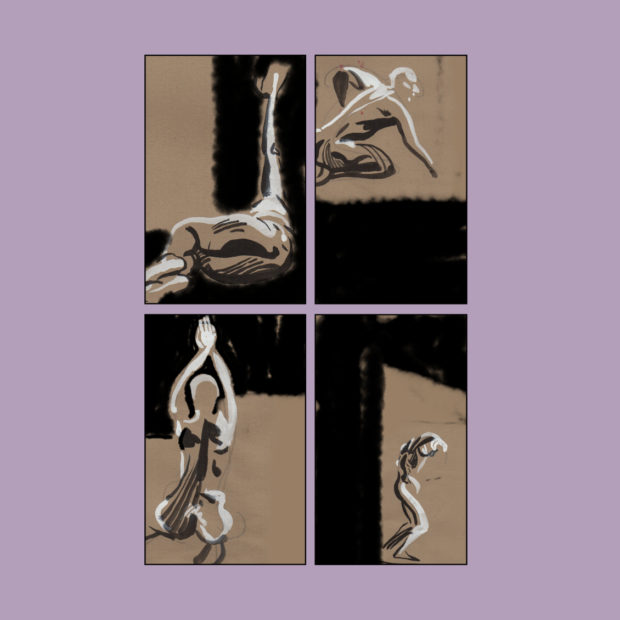
The future of patterns in my universe
The goal is to build a list of patterns from my life drawing comics and other’s work. This takes study thought and practice with doing comics. This blog needs a Comics Patterns Wiki to list the patterns.
Links
The first WIKI or nerds aren’t just for comics
Jim Shooters Lesson on storytelling
The basics of storytelling
Wikipedia on pattern languages, a good overview of Alexander’s ideas and plenty of discussion
